
Ar Tonelico Qoga: Knell of Ar Ciel Review
Ar Tonelico has always been a franchise that stood apart from the pack of run-of-the-mill JRPGs, especially when it came to its focus on music, the plight of its characters, and its... sex. Ar Tonelico Qoga closes the book on the trilogy by continuing this medley of mechanics while also pushing the game into a fully-3D visual style, switching over to a more action-oriented combat system, and including characters that hopefully more people will give a damn about (I know I didn't really in the first two games) with a great character development paradigm. Read on to discover my experience with the game and to figure out whether you should give this quasi-erotic final hurrah a piece of your time.
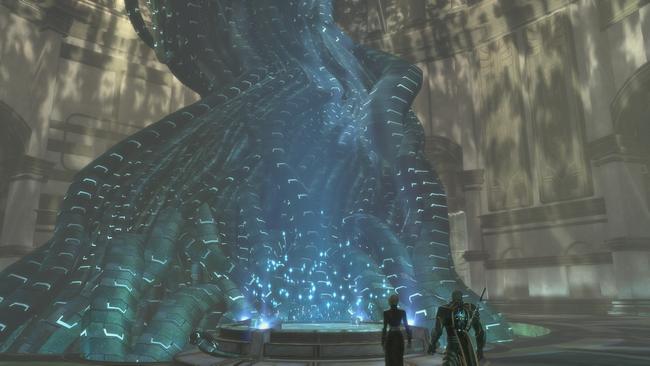
Ar Tonelica Qoga's story is about a young 17-year old protagonist (like all JRPGs) named Aoto - a confident, if not rather arrogant steeplejack living in the small town of Blue Canyon Hamlet, whose world is suddenly turned upside down when he comes across a young girl being chased after by an outside entity.
He is suddenly caught up in a war between two nations as he tries to protect two young Reyvateils, Saki and Finnel, whom are sentient beings that have the power to convert the songs their sing into magic that the world uses as a power source. He is also joined by his best friend, Tatsumi, a young V-Boarder (think competitive hoverboarding) and a feminine-looking doctor, Hikari Gojo, who is seeking to learn more about these two girls and the plight that the world finds itself in. Clustania, a world hell bent on establishing a sort of Nazi Germany totalitarian dictatorship, is hell bent on ensuring a rightful place for Reyvateils and a means to "Purify" the humans through a cleansing process and place the entire species under their thumb. Sure, the characters and backdrop isn't exactly what anyone would call original, but it's the development and the narrative that had me hooked from the beginning, and I guess it's also because I'm just a sucker for a protagonist that treats women like garbage. Kidding, of course, but as they say, it's not about the destination, it's about the journey you have in the meantime.
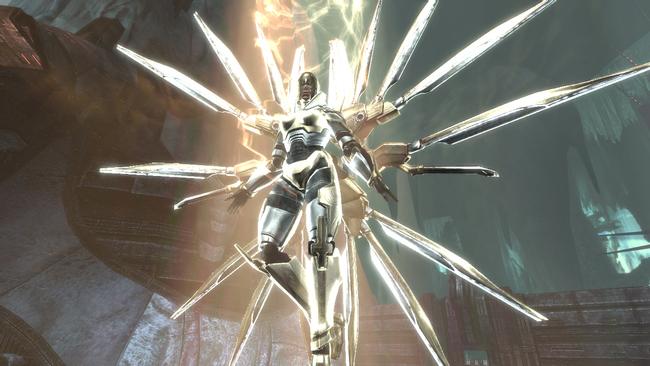
If you have never played an Ar Tonelico game in the past, let's clear one thing up immediately: you will not need to have played the other two games in the trilogy in order to understand just what the hell is going on. Instead of treating us like , Gust and NIS America made absolutely sure that enough of the backstory is explained that it won't take long before the terms Reyvateil and "Diving" (more on that later) are both simply explained and easily understood at least where I was concerned. There are some rather interesting cameos from the earlier games, as the game does take place only a couple years after the events of the last entry, but players shouldn't feel lost.
For the fans already familiar with the series understand, sex plays a big part in the game. But not in the traditional sense. No, my good sir or ma'am, this game slapped me in the face with enough talk about sex and graphic imagery in such a callous manner that I felt like I was watching some show on MTV. I wasn't even a couple of hours into the game when characters were blushing left and right, suffering from a plague of innuendos and sexual metaphors. My boy Aoto had a hard time keeping his penis in his pants as he tried to cater to his harem of beauties. Of course, even though the game is the first in the series to be rated M for Mature by the ESRB, the most you'll be able to see in this game is a bunch of girls (and sometimes even dudes) in their underwear, along with the occassional "shit" and "asshole" being thrown around, so don't get too excited.
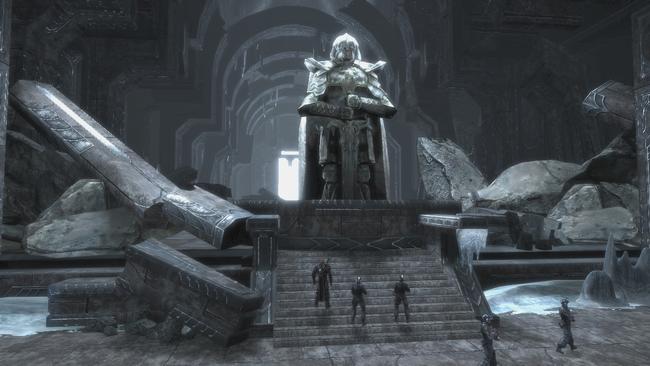
One of the core functions of the game is how it is basically set up to be a sort of dating sim with your Reyvateil friends. Through each save point located throughout your adventure, I was able to rest and visit the girls in their respective tents and get a nice conversation going - fortunately when they weren't in the middle of flipping themselves off in the mirror, or locked in a fierce battle with dental floss, or whatever girls do right before they go to bed. This essentially allowed me to become much more personally intimate with Finnel and Saki - understanding each of their quirks and things that made them tick, even their turn-ons (masochism is a dish best served awkwardly) and turn-offs (BBQ Soda, anyone?).
Let's just say that it also didn't take long for me to find a particular favorite amongst the two. To me, Saki is the epitome of a moe character, and one that I started to care less and less about as time went on. Whether it was because of her small and shrilling voice; her wish that the world was full peace, loving, and caring; or the annoying way that she puffs up her cheeks when an aw-shucks moment comes about. Not to mention, she literally LOOKS LIKE A KID, even if once she takes off her giant pink coat we get to see what fan service is all about. It's like the game is trying to turn me into a child predator, which clears up a little after she strips but that behavior still kinda haunts me.
Finnel, on the other hand, loves to tip toe on the opposite extreme at times, especially later on in the game when her other personality starts to come to the surface. Sure, she may also be the butt of almost every joke, and can be fully classified as a typical "tsundere" (it even says so in her character description), but at least she felt like someone I would personally like to hang out with. At an early point in the game, I started to care waaaay more about Finnel than the plight of Saki, and not once did I truly feel bad about it. That point came in her first sentence when I found out that I'd be hearing Saki talk about herself in the third person, and I hate that garbage.
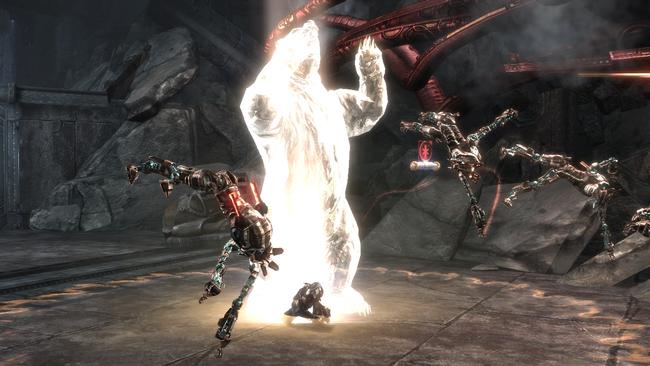
The part that I enjoyed the most, however, was being able to "Dive" (cue the game's sexual innuendo for intercourse and the popping of one's cherry), where Aoto goes into the very souls of the Reyvateils and journey through their Cosmospheres. After diving, you enter the Cosmosphere (a reflection of their mind or soul) and meet the Reyvateil's Mind Guardian that emobides the most precious things and memories the Reyvateil has, or the closest being to their master. During the time spent here, I also came across different Hyumas, the embodiments of emotions and phobias, displaying extreme behavior as reflections of the Reyvateil's characteristics.
It all has a means to an end, as unlocking each level also allows the Reyvateil's Song Magic to become exponentially stronger over time. You can also equip these Hyumas to be used in battle that can do everything from boost the amount of HP you recover over time to the strength of your attacks. This was perhaps the most enjoyable system the game had to offer, and at times overshadowed the plot of the main storyline itself. Moments in this world could be either dramatic as hell or downright gut-bustingly hilarious, in some of those "oh-no-you-didn't-just-go-there" kind of moments.
Item crafting also makes a return, and once again shows that you can make a system that is fun to partake in without being a hindrance on the experience of the game itself. One thing I hated the most about games like Atelier Rorona or Mana Khemia was how detrimental it can be to the game when all you want to do is enjoy the narrative and the characters when all they talk about is their damn recipes and why you can't advance until you learn how to make that shiney ring that adds +10 to your crafting skill. Qoga, on the other hand, has a much more hands-off approach that allows you to synthesize those new items without being too pushy, and the ingredients are so easy to find that just taking a little time out at an inn or save point to craft doesn't feel like a chore. Sure, there are certainly times that you absolutely must take the time out of your journey to craft, like when you're making a Supermove, but there are also events that occur between the characters that can also be entertaining, if not hilarious at times.
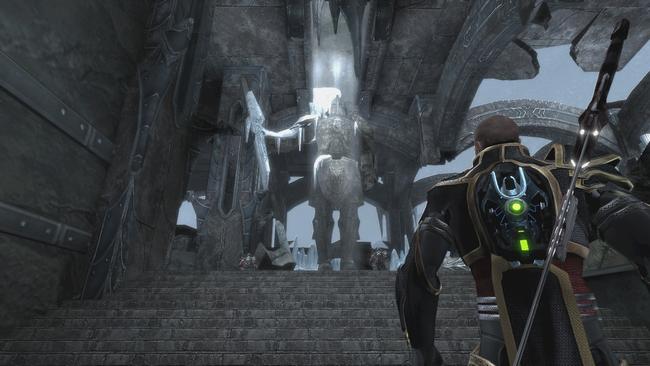
For being the first game in the series to engulf itself into a fully 3D world, Qoga is certainly a charming-looking experience on the surface, but you quickly discover how the game can sometimes look rather shoddy and unappealing for a Ps3 game, looking like it would have probably found a much better place on a handheld instead. I can't say that I preferred the game when it was the ole 2D sprites on a 3D background, but Gust had the potential to create something much more engaging, kind of like what tri-Ace did with a game like Eternal Sonata. Is it too much to ask that an anime JRPG finally have graphics that looks as good as its hand-drawn cutscenes that isn't a licensed Naruto game? Unfortunately, the developers have not yet quite broken out from their PS2 roots, and it is disappointing that we still have engineers working in a class that needs to focus more on a beautiful world to capture a great story to keep the JRPG genre from collapsing. In this case, graphics really do matter for the most part, and I hope that things can evolve before we see the same thing with the next generation of consoles.
What this game lacks in graphical presentation, it more than makes up for in an absolutely amazing musical score. If you were like me and picked up the Premium Edition, you also got a copy of the soundtrack, and not a time goes by when I'm in my truck that I don't pop it in and revel in the beautiful orchestrations and fantastic vocal melodies. Sure, it won't stand up to the likes of a game like NieR, nor does it contain as many memorable tracks as Ar Tonelico I and II, but it's still heads and shoulders above a lot of games in the genre and is well worth the listen.
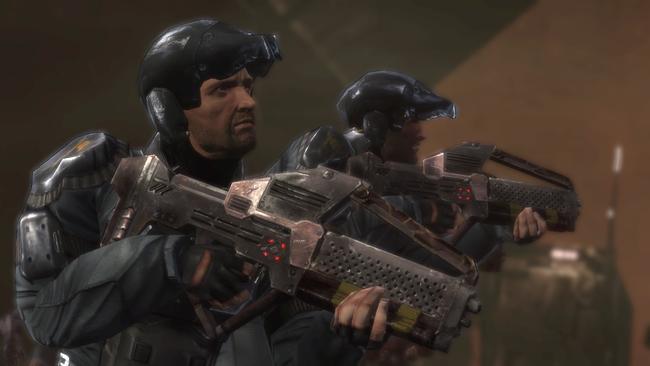
Although the combat system in Ar Tonelico used to be much more of a turn-based affair, Qoga flips the formula on its end and switches to a more high-octane real-time battle system similar to the Tales series. You have your three "vanguards" who are all tasked to protect the defenseless Reyvateils from any bodily harm, who are spending most of the battle singing to accumulate energy that can be used to unleash . Should the enemy get too close inside the "Heroine Field" that surrounds the Reyvateil, their health starts to drop, so players must be quick to expel them outside of the ring, while a cooldown meter controls how quickly a player can do this.
At the bottom of the screen is a horizontally-scrolling Harmograph meter with bars that represents the song's cadence. Tapping to attack by the beat of the music when the bars are orange raises the Reyvateil's excitement level, represented by a gradually-swelling rotating heart on the bottom right of the screen. When the size of the heart grows large enough, players can "Purge" the Reyvateil, which means the battle comes to a complete halt and watching as these nasty girls strip off some of their clothing, therefore allowing them to execute stronger Song Magic. Basically, the more clothes they take off, the stronger they get, but the farthest they go is showing their frilly underwear. I know, a damn shame, right? At least you have porn on your computer.

It's an interesting twist on the typical formula for the series, and it puts a lot of emphasis on the importance of having a well-developed (ahem) Reyvateil to help fight your battles, because even of Hard mode, the game can be a little too easy to beat when you're dishing out thousands of points of damage and beating even the most arduous boss in the matter of a few minutes. I would also like to note that, even though the game does have random battles, Qoga also brings back the battle gauge that controls the number of battles you will encounter in each land. Once this bar drains, I was able to run freely around the place searching for treasures without having to deal with another monster, even after an important cutscene. It's always been a mechanic I enjoyed in the series, and one I wished more games that continue to rely on random encounters to employ.
Unfortuantely the game can also suffer from a case of the Snail Pace. For example, you can't skip cutscenes in and out of battle, even after seeing one of your Reyvateil's strip or a boss unleash their special attack for the umpteenth time. The game also at times suffers from some framerate issues, and even game crashes. For example, I was at the last boss fight, and right after I had unleashed my final supermove that defeated the boss, the game halted during the transition to the cutscene with the battle music still playing. That means I had to reset my PS3 and start all over again, crawling through the long stretches of dialogue before I could try again. These questionable, if not debilitating issues only happened on occassion, but they sporuted up just enough to be worth mentioning. The platforming mechanics could also be a little goofy at times, with Aoto literally leaping about 10 feet in the air with his legs locked into place - I almost expecting him to click his heels before landing gracefully on the ground.
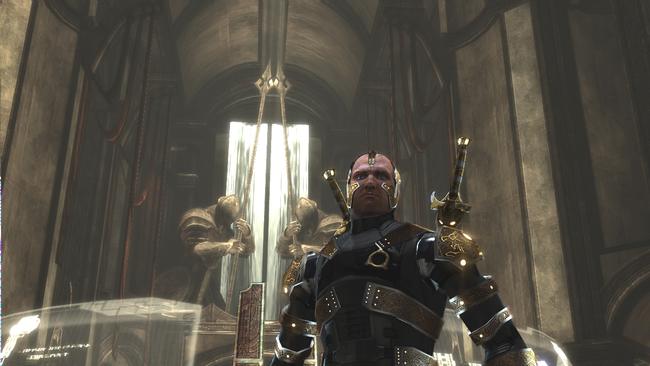
Ar Tonelico Qoga is a title that suffers from its fair share of bugs, glitches, and even spelling errors - Aoto even starts off by calling a Cosmosphere a "Cosmophere" a few times. However, to the game's credit, it never stopped persisting as an enjoyable experience that had me looking forward to playing the game for another long session. Fortunately, with its multiple endings and myriad of conversations you can have with your Reyvateil girlfriend, there is certainly enough game here to appreciate. With interesting characters accompanying solid voice acting, and a beautifully unique game design the game can call its own, Ar Tonelico Qoga won't transform you into a JRPG fan, but those who are already a devotee will find something to hook on to. Of course, if you are a pedophile, you will find A LOT more to hook on to. With over 25 hours of game to experience and elements that can appeal to many RPG fans, it's hard not to at least give it a recommendation.